DANGER ROSE
Think of a cone
Summit at center
Rings as levels of elevation
Eight sections
Colors of danger scale
Not a map
Visual of avalanche danger
for daylight hours
Jim Bodeen
6 January-16 January 2011
AVALANCHE ROAD FIELD BOOK
THE GO GETTER IS A RED FLAG
BEFORE CROSSING THE SOUTH SLOPE IN LATE SPRING
SUMMIT POWDER FEVER--for Scott, Dave, and Solveig
Coulour and islands of safety.
Level One Decision Making--
Experiential based--managing the dangers.
Formations of layers in the snowpack.
Snow shapes and forms and signs of crystals--
needles, plates and dendrites decomposing in wind.
Snow falls to ground at different times and rates in different weather.
Oxygen in snow.
Oxygen in snow--breathe, melt, freeze.
Know what you don't know.
It's a skin check.
You have to get back.
What they didn't know
is that couloir above them
was a mushroom-shaped entrance to trouble.
Narrow gulleys with steep gradients
aren't always corridors of passage.
Entering snow and cutting it is high risk--
existing tracks don't make slopes ok to go.
Two main types--loose snow, slab snow.
Most avalanches come from moving slabs.
Stress versus strength.
Am I going to add enough stress to snowpack
so that it loses its strength?
A slab breaks as one piece, pops as a cohesive unit.
Put sun hitting new snow in spring on south slope
into a photograph. Don't cross it.
Can't see weak layer inside snowpack.
Terrain selection's your most important skill.
Are we going to cross avalanche terrain?
The snow shoe crowd following summer trails in winter
may be worst way to go.
Snow grains change over time
as soon as they hit the ground
beginning metaphorphic process.
The geology of snow.
Continual change on surface and inside.
Wind, temperature, sun and rain change surface.
Buried surface hoar can sustain new snow
but not new pressure. That's why we cut the snow.
Melt-freeze metamorphism may not bond.
Faceting--those crystals--common when snowpack is shallow--
when it's cold. These snow grains inside snowpack,
hollow, conical, five and six sided crystals,
beautiful under glass,
we need to find those variables.
We were going to ski the slope
but decided to dig a pit.
Check snow stability.
Get your good to go from the snow.
Create a plan for poor visibility.
Explore the options.
Eyes on everywhere.
Avalanche is not the only danger.
Where I want to go
Where I could go
Jim Bodeen
6 January-16 January 2011
Dust on snow.
Dangers of dark snow.
Dust on snow makes snow dark.
Dark snow's a fast melt. Too fast.
Dirt traps heat and melts snow, clogs tractor.
Dust brings down snowpack for all--farmer and skier.
Those storms coming from the SW
is what I'm talking about.
Jim Bodeen
4 January--16 January 2011
FOUND POEM IN THE NOTEBOOK
DURING AVALANCHE TRAININGMost of what a fireman does is practice.
Jim Bodeen
15 January 2011
Beacon practice with multiple burials at Alpental
during Avalanche Training Exercise with Pro Ski Guiding
DIGGING THE SNOWPIT: OPEN LETTER AFTER AVALANCHE
TRAINING AND BACKCOUNTRY SKIING--ON GEAR, GUIDING,
SNOW, PREPARATION, THE BODY, PRACTICE, AND AGING
Everything said about snow goes into the notebook.
Opening Paradise Basin, Hogback Mountain and the Goat Rocks
to alpine skiers dressed for chairlifts and lodges redefines the job
of Ski Patrol and Search and Rescue crews. It's not enough to warn
with $500 fines. The border beckons. Crossing it changes one's world
and one doesn't go back. I know about vision quests.
The most memorable photograph in our family's album
is a self-portrait my son took of himself in the Bob--
Bob Marshall Wilderness in Western Montana,
purifying the body and ridding himself of lessons learned
in the family home. Learning to take care of ourselves.
Making our steps. This is an invitation to paradise and beauty.
No guarantees on this journey. Welcome to the backcountry.
My son took an old pair of straight skis--K2 Xplorers,
and refitted them with the Freeride heel release binding,
making backcountry possible with skins. He did this for me.
To his credit, he doesn't do this until I ask.
Free the heel, free the mind. The practice I did inbounds
doesn't prepare me for the outback. My legs can climb
with the young but my kick turn on switchbacks
makes me a liability to any traveling back and deep.
I don't have the practice necessary for steeps
and I'm slow to adjust heel height with skins
on critical ascent turns. My pumping heart
tells me what others can see with the objective eye.
Shovel and probe in the backpack.
Beacon strapped to the body.
Fireman Yellow is shade and texture
of my Backcountry Access Stash bag.
Smart work of beauty. Avalanche basics
are reviewed with waterproof illustrations
on the inside pocket carrying the shovel.
I didn't get the saw to cut snow.
Replacing Luck is stamped in sans-serif letters
on my Suunto M-2 Compass. AIARE Curriculum.
The American Insitute for Avalanche Research and Education.
Get Educated, Stay Educated, waterproofed pages
in the Field Book read. Avalanches don't know
you've taken this course. Where we go, how we go,
is a list of red flags. Avalanches don't care
what time it is, either. Companion rescue
is your only chance of survival.
Our teachers wrote the book we're using.
If recovered in 15 minutes, survival rate is 92%.
At 35 minutes survival rate drops to 37%.
Most deaths come from asphyxiation.
In the granular flow, hands up, over head,
cover face and create an air pocket.
Snow contains oxygen, but breathing
melts the snow and freezes it. You'll be
breathing carbon monoxide in minutes.
Watching my son with probe and shovel is good.
How to probe is as critical as carrying it.
They break. Attention from all is focused.
But I'm carrying a camera, the only one
taking pictures. My focus is different,
I'm remembering a movie on hypothermia
from thirty years ago. The man with the camera
paying more attention to flower petals than weather
coming in. I notice an open zipper on my pack.
This feels a bit like Basic Training to me. I'm twenty.
I remember the day I quit the bayonet.
Just dropped it. This isn't for me. 45 years ago.
The beacon's not a bayonet.
I'm holding a Geiger Counter in an old movie
looking for gold. No time for dada.
The young instructor doesn't laugh.
She steps into deep snow close to me,
Hold it into your stomach.
Let the arrow follow the signal it finds.
Let your body follow the signal.
She brings me back, makes certain I get it.
My body feels clumsy in ski boots,
walking uphill in a snow field
crossing an avalanche path.
The buried person will be someone I love.
Looking for a crutch I say my age to myself.
Lives are at stake.
One's age is one more piece of data.
Point last seen limits the search zone.
The average burial depth is 1.1 meters.
Start digging on the down side from the victim,
shoveling fast, throwing snow to the side.
You'll move a ton to a ton-and-a-half of snow.
After you get the body, real rescue begins.
Jim Bodeen
15 January 2011























































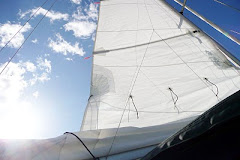

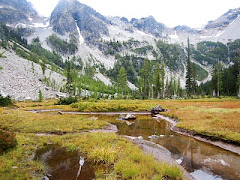


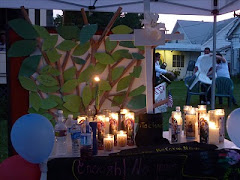






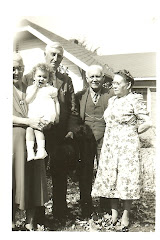
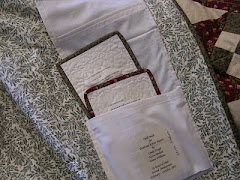








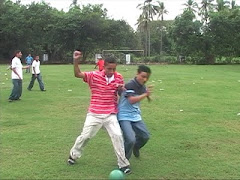
well, no one can accuse you of sitting in the Lazy Boy. wowzer. kjm
ReplyDelete